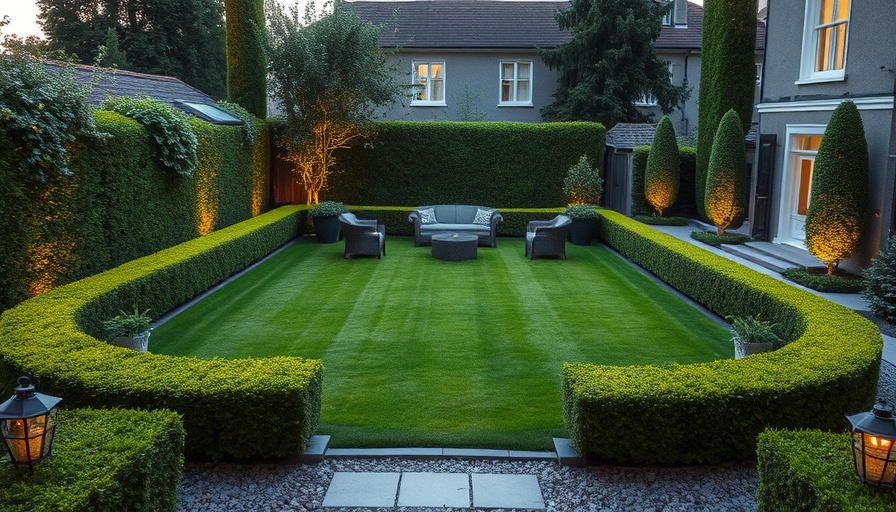
Understanding the Need for Dimension in Your Garden
A vibrant garden is more than just a flat expanse of soil and greenery; it's a multidimensional environment that invites exploration and meditation. Yet, many homeowners struggle to create that semi-enclosed, inviting atmosphere. Interestingly, the secret lies in understanding the layers of design, mathematics, and effective plant selection that can transform a lackluster space into a charming haven.
Creating an Enclosure: The Foundation of Your Garden
Before diving into plant selection, it's essential to assess your garden's layout. Incorporating vertical elements can significantly boost the perception of height and structure without the cumbersome nature of traditional fences. Following the law of significant closure—where your vertical height should ideally be one-third of your horizontal width—is a practical guideline. For instance, if your garden's width is 24 feet, consider using tall plants, such as hedges or ornamental grasses, that reach around 8 feet to create a more enclosed feel.
The Role of Height, Density, Spread, and Footprint
Understanding the essential characteristics of your plants is crucial. Height refers to how tall your plants will grow, while density reflects how thick they will appear. Spread pertains to the width of the plants, and footprint refers to the space they will occupy in the garden. When choosing which plants to incorporate, be mindful of these factors, as they affect everything from visual aesthetics to plant health.
Add Tall Plants to Structure and Frame Your Garden
Tall plants, such as sunflowers, bamboos, or even climbing vines, provide not only height but also create focal points, drawing the eye and guiding movement throughout the space. For example, placing tall plants at the end of a pathway can create a directional element, adding intrigue to your garden's layout. Consider a mix of evergreens that maintain visual interest year-round, alongside seasonal blooms that add color and fragrance during different months.
Considerations for Plant Placement
When planting, spacing is essential. If you plant shrubs too close together, they will compete for light and nutrients, leading to a congested and unhealthy garden. For instance, plant trees with adequate spacing to accommodate their future growth, whereas hedges can be planted closely to create a dense, cohesive barrier. Ground cover plants should also be densely packed to effectively suppress weeds and enhance soil coverage.
Color, Shape, and the Appeal of Diversity
Next, let's talk about the colors and shapes of your plants. A diverse range creates not just visual texture but also adds layers of interest that enrich the garden experience. By mixing spiky bushes, rounded perennials, and textured grasses, you can foster an inviting and lively space. This variety captures attention and creates a habitat that can support beneficial wildlife, enriching the garden's ecosystem.
Embrace the Future of Urban Gardening
As urban gardening continues to thrive, exploring innovative techniques such as vertical farming or hydroponics can lead to exciting returns on space and yield. These methods allow individuals in crowded metropolitan areas, including families or aspiring homesteaders, to cultivate their food sustainably. Engaging in local community gardens can also foster connections and even improve food security in neighborhoods.
Building a Sustainable Urban Oasis
Ultimately, transforming your flat garden into a dynamic space is about creativity and understanding. By appreciating the significance of height, density, and plant diversity, you'll move toward creating an inviting environment that promotes well-being and community. With a touch of imagination, your gardening efforts can yield not only fresh produce but an enriching life experience.
Call to Action: Take the plunge and start your journey towards a dimensionally rich garden! At every step, remember that your choices contribute not only to your outdoor aesthetic but also your family's health and your community's sustainability. Delve into methods such as urban farming or community gardens to connect with nature and nurture your neighbors.
 Add Row
Add Row  Add
Add 




 Add Row
Add Row  Add
Add 

Write A Comment